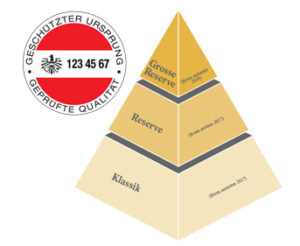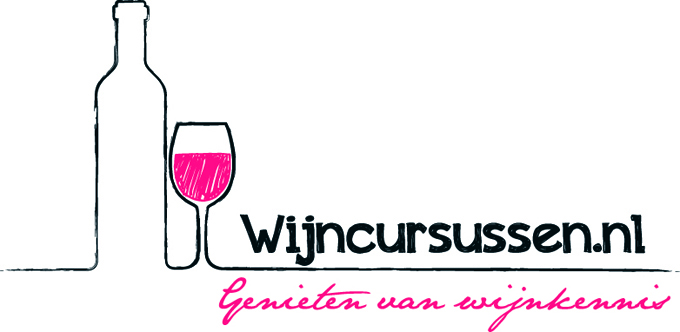The waiting has come to an end! To mark the Day of Austrian Sekt on 22 October, the sparkling wine categories Sekt g.U. Klassik and Sekt g.U. Reserve are making their market debut (‘g.U.’ standing for geschützte Ursprungsbezeichnung meaning protected designation of origin). Geschützter Ursprung, geprüfte Qualität – protected designation of origin and certified quality – is the official quality seal identifying the best among Austria’s Sekts, which can be recognised by a distinguishing symbol on the capsule, similar to the banderole on Austrian Qualitätswein. In both Klassik and Reserve categories, the grapes must be harvested in a single Austrian federal state, although the permissible methods of production can vary – time spent maturing on the lees, alcohol content or residual sugar (dosage) – as the flavour ultimately may. For every occasion, for every sort of personal taste and culinary consideration, the appropriate Sekt g.U. is now available in Austria – and not only for festive events.
Protected designation of origin, certified quality
The upmarket positioning of Austrian Sekt g.U. is represented in the form of a pyramid, one composed from three levels of quality: Klassik, Reserve and Grosse Reserve (Grande Reserve). The law stipulates that the product name will consist of the category (sparkling wine of quality, or Sekt), the name of the protected designation of origin (Austrian federal state, and in the case of Grosse Reserve also the municipality) along with the term ‘geschützte Ursprungsbezeichnung’ (protected designation of origin). In addition, Sekt g.U. may only be released to the market after passing a sensory examination conducted by the Federal Viticultural Authority. This is done so that the consumer may trust the certified quality of the beverage when purchasing a Sekt g.U. The spectrum of grape varieties permitted ranges from Grüner Veltliner, Welschriesling and other indigenous varieties to international grape varieties such as Sauvignon Blanc and Riesling, and includes the classic vines of the Pinot family.
Sekt g.U. Klassik – apéritif and so much more
Here there is no prescribed method of production, but the wine must spend a minimum of nine months on the lees and indicate the maximum permitted alcohol content of 12.5% on the label. In this category one will find lighter and livelier, fruit-forward sorts of Sekt, which are ideally suited to the role of apéritif with canapés, or providing the ideal accompaniment for lighter and more delicate preparations of fish. Attractive aromatic possibilities include Sekt g.U. made from Gewürztraminer, Muskateller or Schilcher (Blauer Wildbacher). The grapes must have been harvested in a single federal state, which will be named on the label as the designation of origin – any indication more detailed than that of the state is forbidden. This will read as, for example: ‘Burgenland Sekt g.U. Klassik’.
Sekt g.U. Reserve – timeless, elegant and assertive
Acknowledging the great tradition of the French province Champagne, Sekt g.U. in the Reserve category may only be produced by means of the méthode traditionelle, which is also the only permitted method of production for Champagne. Grapes must be harvested by hand; this must be done in a single federal state, as the whole-cluster pressing must as well, in which the rate of yield can be no more than sixty per cent. After a minimum maturing period of eighteen months on the lees, the Sekt will already be expressing complex aromas and delicate tones of brioche, will exhibit firm, elegant structure and display its charms via an integrated, finely beaded mousse. This category is produced by the large commercial Sekt houses as well as by winegrowers who execute their own tirage, thus realising a personalised interpretation of timeless elegance. The Sekt must be finished ‘brut’, which means a maximum of twelve grams per litre residual sugar. As an accompaniment to fine dining, Sekt in this category will prove the perfect partner for white meat and spicy dishes, as well as fresh shellfish from the raw bar.
And we look forward to greeting and enjoying the highest level of the pyramid – Sekt g.U. Grosse Reserve – on the Day of Austrian Sekt in 2018!
Curtain-raiser for the Day of Austrian Sekt
Since 2010, the 22nd of October has been celebrated as the Day of Austrian Sekt; this year the opening event took place on 20 October with a ‘Day of the Open Cellar Door’, held in the Austria National Library. Guests could not only sample Sekt from thirty-one various producers, but were also able to explore the subject of which palate-pleasers offered particular delight alongside the sparkling wines. Tasty morsels served included snails, specialty breads, mushrooms, diverse antipasti, Alpine caviar and cheeses.










